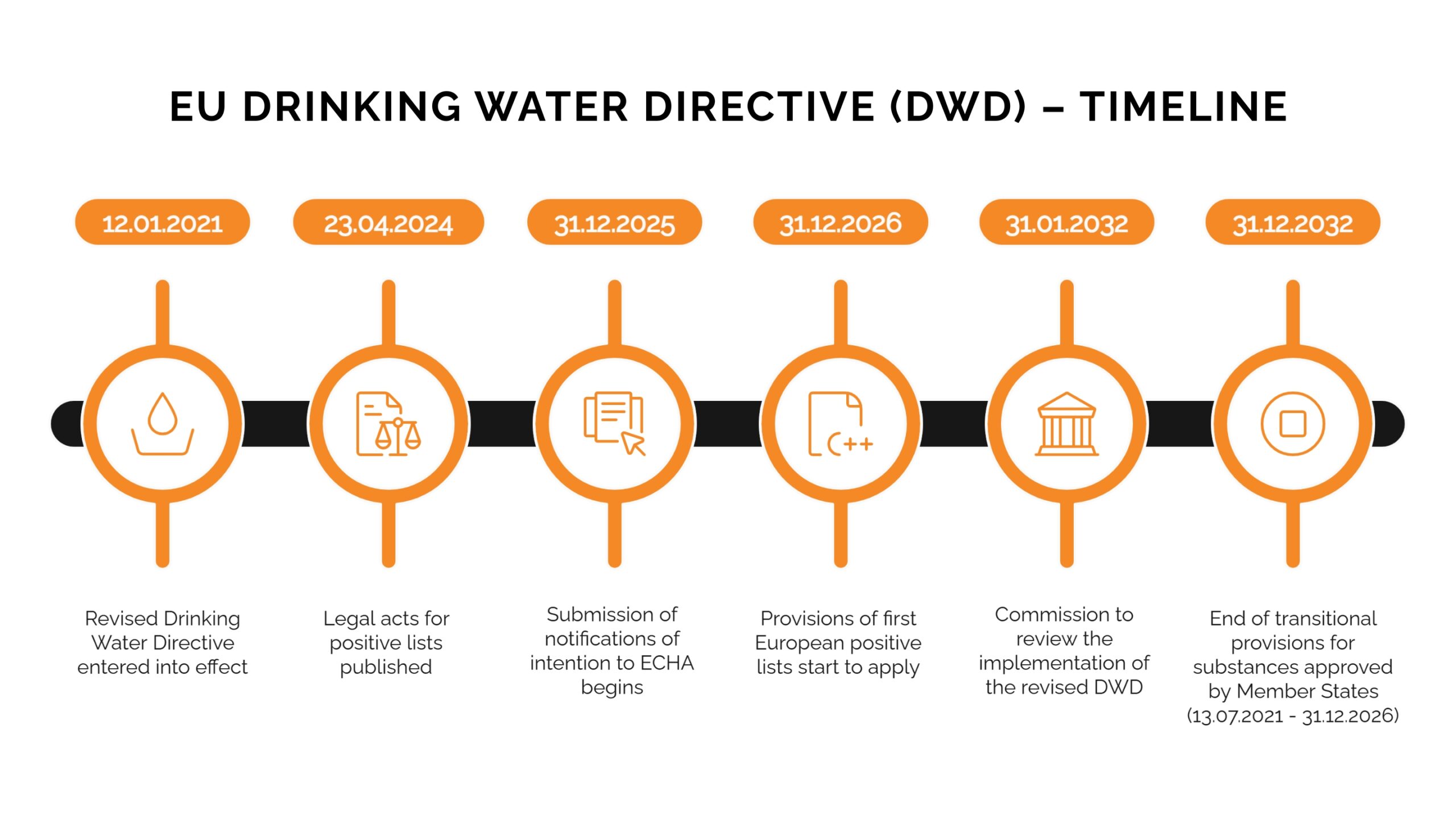EU’s Drinking Water Directive: Did you know?
The updated EU Drinking Water Directive (2020/2184/EU) – in force since January 2021 – marks a major step forward in protecting public health and the environment across the EU. It replaces the 1998 directive with stronger, science-based standards to address today’s challenges.
Key objectives include:
- Setting strict water quality standards to safeguard health
- Ensuring high and consistent water quality across the EU
- Promoting fair and equitable access to safe drinking water
The Directive applies to all water – whether in its original state or treated – intended for drinking, cooking, food preparation, or other domestic purposes in both public and private premises. It also covers bottled water, water from tankers, and all water used in food businesses for producing, processing, or marketing consumable products.
A key focus of the DWD is regulating materials in contact with drinking water – from source to tap. Only substances listed on one of four European positive lists may be used:
- Organic
- Metallic
- Cementitious
- Enamel, ceramic, and other inorganic materials
These harmonized lists – maintained by the European Commission and coordinated by ECHA – are based on national submissions. The organic list is aligned with EU Regulation 10/2011 for plastic food contact materials. A searchable version of the lists will be available soon to improve transparency.
Companies must monitor this regulation closely, assess its applicability to their operations, and take appropriate action.
This directive represents a key milestone in strengthening water safety, building trust in infrastructure, and supporting long-term sustainability.
REACHLaw is closely monitoring the ongoing development of the DWD.
Check out the implementation timeline in the figure below.


